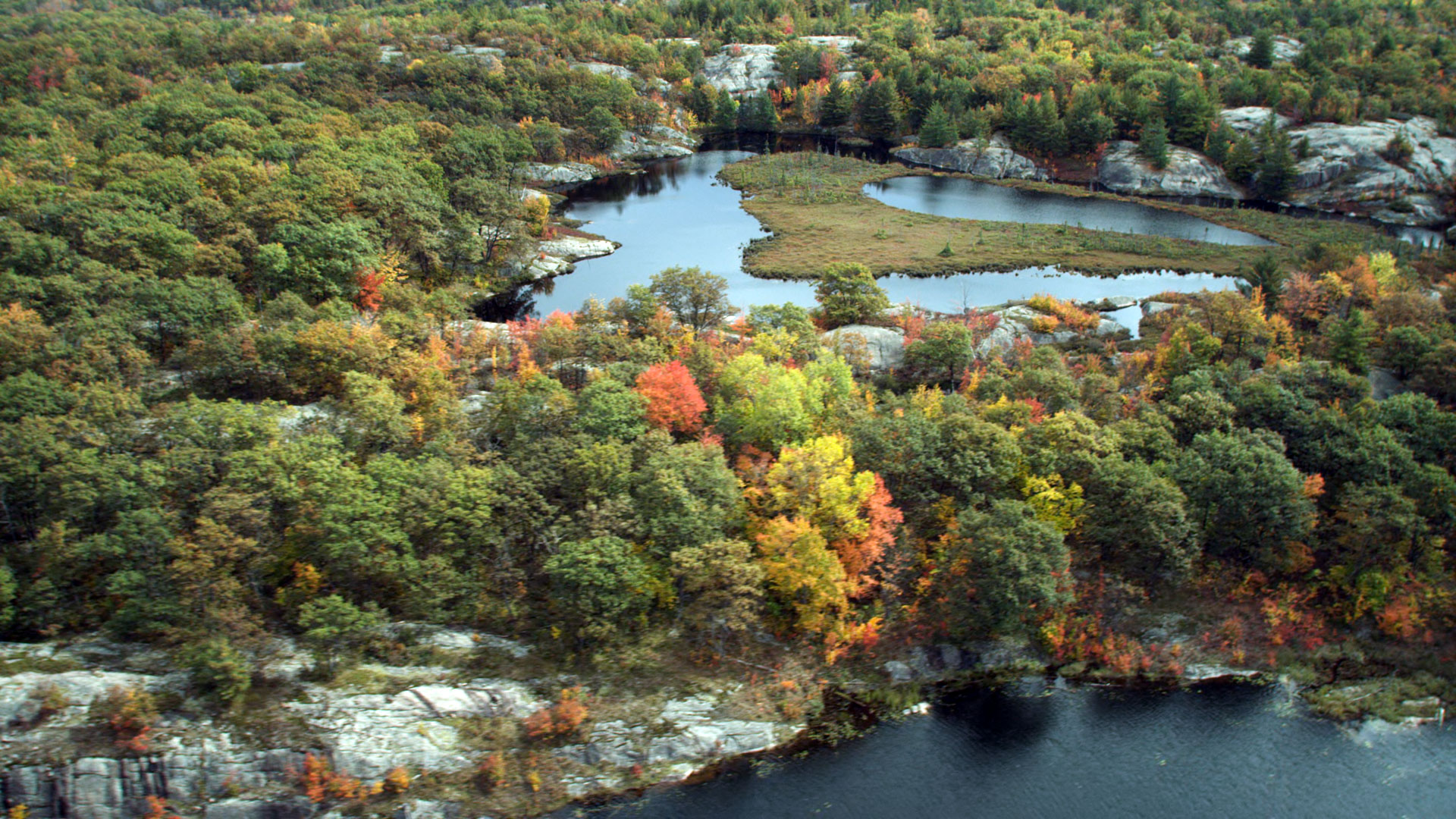Think This Improvement Area is Right for Your Lake?
☐ There are a lot of lights (cottages, floodlights, etc.) present around the lake at night
☐ There are many man-made structures around the lake such as hardened shorelines, docks, or fences
☐ I notice lots of different wildlife and plant species in and around the lake
If you’ve answered YES to the above questions, the Habitat Conservation & Biodiversity Improvement Area may be beneficial for your lake!
Your Property as a Habitat

Your property has the potential to be a hotspot for wildlife big and small! Many things we see as “messy” about our properties like fallen branches, leaves, rocks, and wild vegetation, various wildlife see as the perfect place to call home or find food! Animals as large as the beloved mammals all the way to the smallest of insects can all benefit from complex, connected habitats.
Healthy Habitats
Healthy habitats have two features that make them healthy: habitat complexity, or the variety of a habitat's make-up, as well as habitat connectivity, or the extent to which habitats are connected to facilitate the movement and dispersal of wildlife.
What's The Difference?
Habitat Complexity (or "heterogeneity") refers to the number of biotic (living) and abiotic (non-living) aspects of a property. Things like diverse plant species, rocks, decaying debris, and branches can all help to create different microhabitats in an area which are crucial for supporting species through their many life stages. Basically, the messier the better!
Habitat Connectivity is the degree to which natural habitats are connected to one another. Natural areas must be connected to provide the safest and most desirable habitat areas for different species. These connections can be broken by large docks, fencing, retention walls, or mowing vegetation. Removing these connections can have detrimental effects to the wildlife on your property by forcing wildlife into open and more vulnerable areas.

A large, complex, and connected area makes for the best type of habitat for all species!
Habitat Fragmentation

Photo via the National Audubon Society.
The opposite of habitat connectivity is called habitat fragmentation, and it (along with habitat loss and degradation) is the leading cause of biodiversity loss across the globe. You might be fragmenting habitat on your property through human-made structures like large docks, retaining walls, fences and revetments, or by clearing vegetation to maintain views. Removing vegetation at the shoreland can disturb the natural flow of water and interfere with the dispersal processes of many plants and animals.
With increased habitat fragmentation, habitat patches become smaller and more distant from each other. This means that travelling animals become more vulnerable to predation, competition, and harsh environmental conditions. Ultimately, and in its most aggressive form, habitat fragmentation can result in a loss of species and genetic diversity. When populations of plant and animal species become so isolated, they are forced to breed with one another, lowering their genetic diversity and rates of survival.
How Can I Help Support Biodiversity On My Property?
Leave the mess!
We know it’s tempting to clean up your yard of debris, branches, or rocks, but the wildlife you share your property with will thank you for leaving their home a bit more messy!
Avoid separating natural areas!
Avoid mowing areas of dense vegetation and avoid building fences, docks, or other large structures that would break up natural habitat areas for the wildlife along your property!
Turn your lights off at night!
Avoiding harsh LED lights, putting lights on timers or installing motion sensors on outdoor lights can help to prevent light pollution in the area and support insect populations.
Want to Learn More?
The Blue Lakes Program has put together resources on how property owners can manage and conserve habitat on their property. You can launch this guide below!
